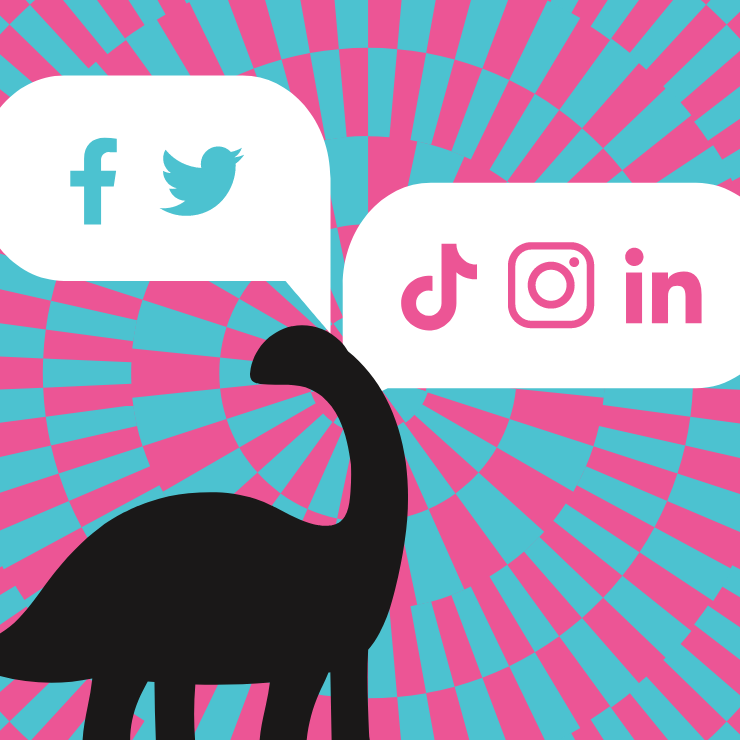Improving B2B content strategy: Why basic methods don’t always work.

Every B2B marketer knows how important content strategy is, along with the standard methods for making it more effective. But many don’t understand why those methods work — or why they don’t.
Reaching today’s B2B decision-makers with content that impacts them on an emotional level — and motivates them to action — is a mammoth, ongoing challenge. That’s why you can’t improve your content strategy by just following a few well-known steps.
Here’s how to get past the basics and forge a next-level B2B content strategy.
Don’t just define your target audience. Inhabit their minds.
Every good B2B content strategy starts with knowing who your customers are. Of course, you should research and create buyer personas that include demographics, pain points, goals and objectives.
Now, do those personas feel like real people? If not, keep digging.
Buyer personas should reflect the dynamic reality of the buying experience, not a static picture. Decision-makers don’t spend all day thinking about your offerings — they solve problems in small steps that involve emotional decisions, personal motivations and surprising barriers. And those can all change from day to day.
Your strategy should tailor content to address those specific needs and challenges at the moments they arise. When it’s done right, you should almost feel as if you’re inhabiting your customer’s brain.
Don’t just develop a content calendar. Align it with your buyers’ journey.
You need a detailed content calendar to plan content creation and distribution; set topics, formats, and deadlines; and assign responsibilities to team members to ensure consistent and timely publishing.
All of that is important, but it isn’t strategic. To improve your content strategy, your B2B content calendar should reflect the realities of your audience’s buyer journey.
The channels where buyers look for information and expertise aren’t always connected to a stage of a marketing funnel — they’re connected to buyers’ dynamic emotional states. (And the traditional funnel may not even apply.) The key is to deliver hyper-relevant content when and where your audience needs it most.
That means a simple grid on a spreadsheet may not be a good enough content calendar. Your calendar should reflect a continuous process of reinforcing motivators and removing barriers that matter to your audience.
Don’t just create diverse content formats. Build them from a messaging platform.
Serving up B2B content in different formats is essential for reaching different buyers with different learning styles. These can include:
- Blog posts and articles
- Infographics and visual content
- Videos and webinars
- Case studies and whitepapers
- Podcasts and interviews
But the more ways you deliver content, the more you risk your messaging straying off-message — especially if it’s developed by different writers over a wide span of time.
How do you make sure everything you create delivers the same core messaging no matter what form the content takes (or who writes it)? You build a messaging platform that unambiguously lays out the value proposition of your organization (or brand, sub-brand, solution, etc.) and the pillars that support it, along with short- and long-form verbiage that any writer can use for any form of communication.
A messaging platform gives your team a framework of your why, what, and how — and why it matters to your customers.
Don’t just measure and analyze performance. Leverage the data for continuous improvement.
Tracking KPIs and performance metrics is an essential component of every B2B content strategy. Of course you’re going to use analytics tools to compile data on traffic, engagement, leads, conversions, clickthrough rates and everything else that’s important.
You should certainly use all that data to validate your approach, adjust your spend and justify future marketing budgets.
But to truly improve your content strategy, you should also leverage that data to compare top-performing content with less well-performing content and use those insights to identify areas for improvement.
Remember, your B2B audience does not sit still. A lot can change between the time you draw up your strategy and the time your content hits the market. (Also, your original ideas may have been off the mark.) Use your performance metrics to keep your personas current and continuously refine your content strategy.
Don’t just follow the basic content strategy steps. Make every step matter more.
You can and should explore all the standard methods for improving your B2B content strategy. These include all of the above, plus:
- Conducting thorough keyword research with high-volume, relevant, long-tail keywords
- Leveraging user-generated content such as testimonials and reviews that build trust and credibility
- Collaborating with industry influencers via guest posts, interviews or joint webinars that expand your reach and tap into new audiences
- Repurposing and updating existing content into different formats with new insights
- Promoting content across multiple channels from social media to email to content syndication
But just doing these things is not enough. You need to do them with the understanding that your audience isn’t some monolithic bloc but rather an ever-shifting group of human beings who make emotional decisions and may be completely oblivious of your messaging until the moment they desperately need you.
In other words — dig deeper, plan for surprises and give all your content a human touch. That’s the real method for improving your B2B content strategy.


